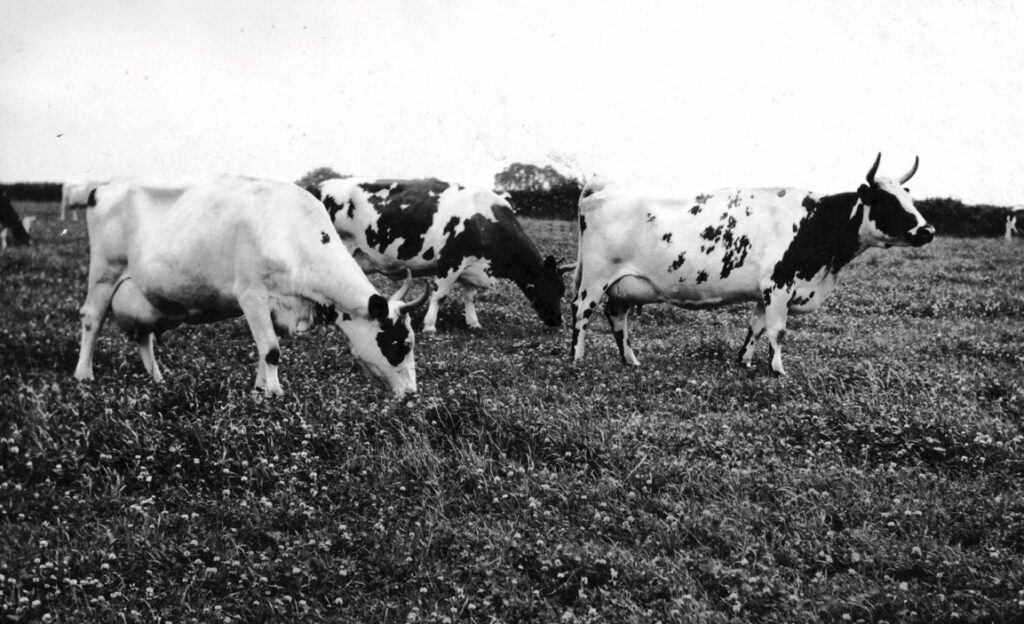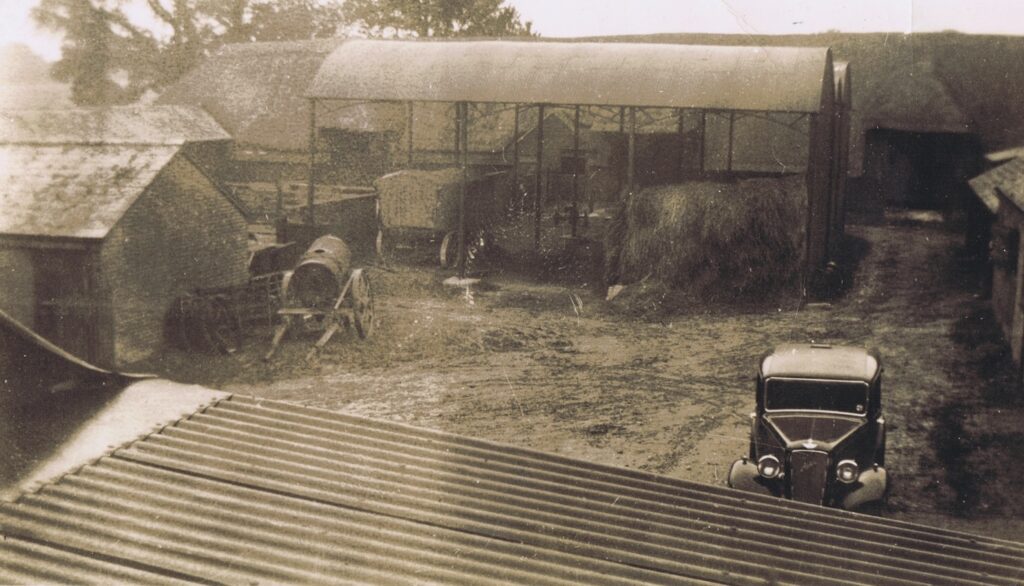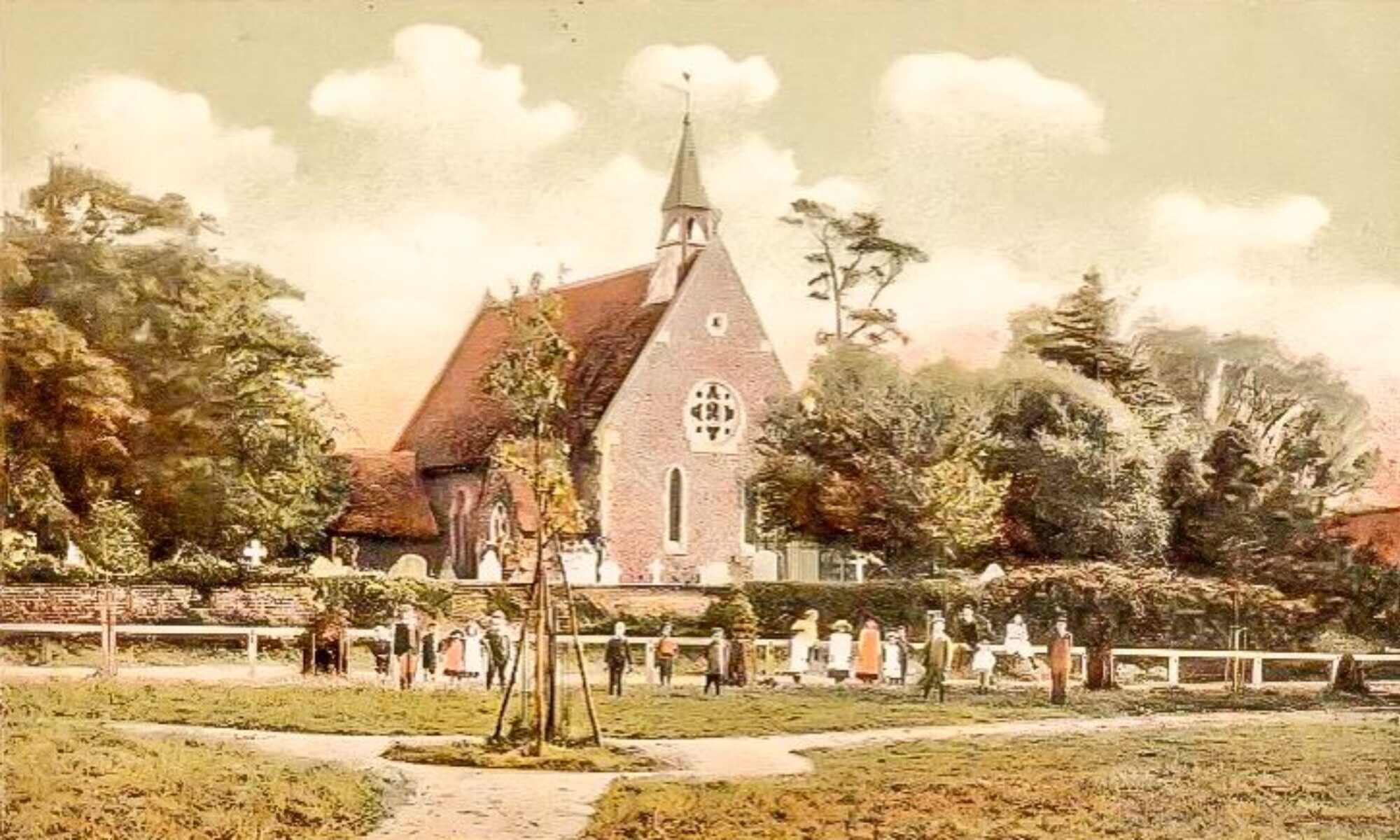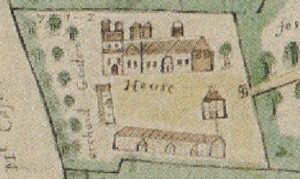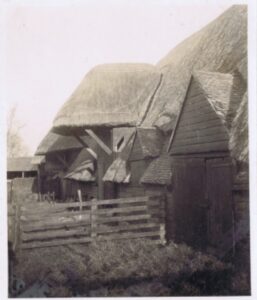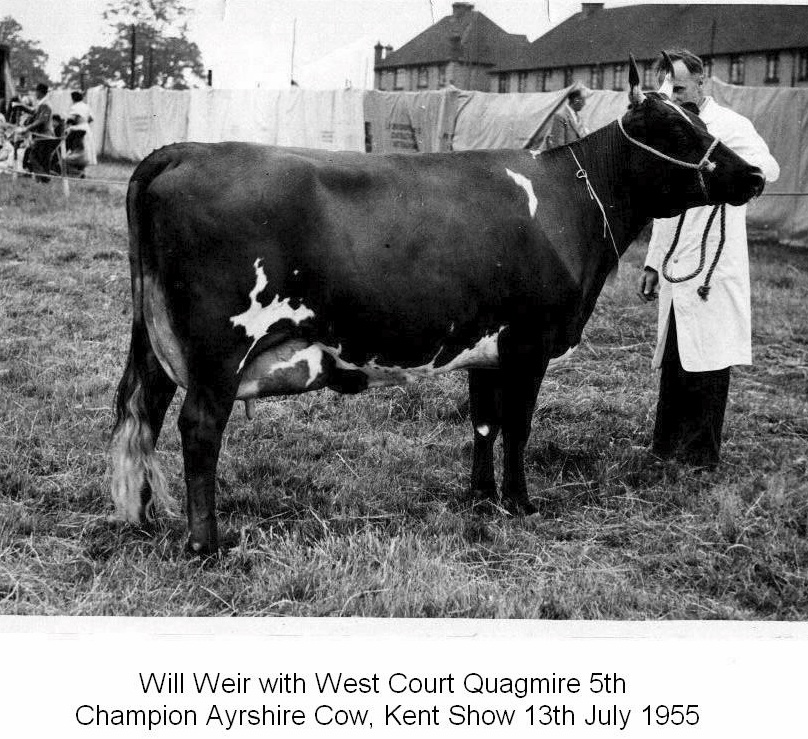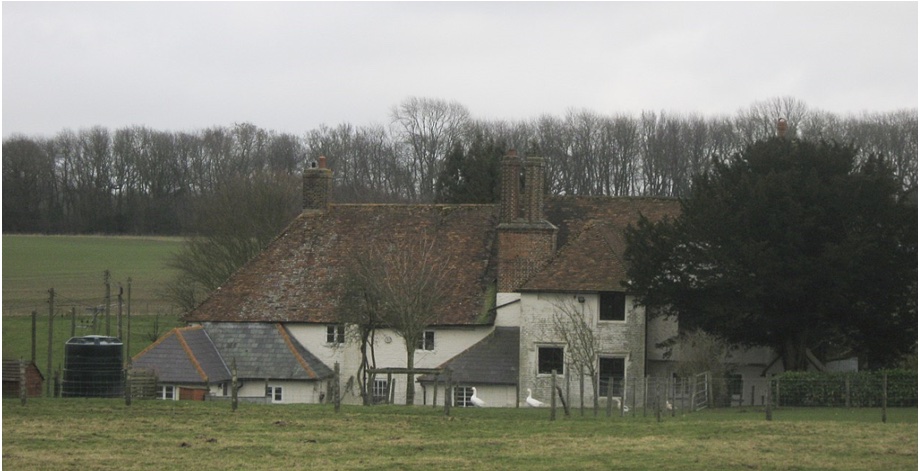West Court Farm History
Westcourt Lane, Shepherdswell
The history of West Court stretches back to before 696, when it was known to belong to the canons of the Priory of St Martin’s in Dover. It is mentioned in the Domesday survey and was originally a manor or grange. The lands held were probably farmed by tenants whilst the manor was inhabited by the canons, possibly as a rest home for old and sick monks.
It remained in the possession of St Martin’s until the Dissolution when, valued at under £200 per annum, it came into the ownership of Henry VIII in 1536. By 1538, Henry had granted the manor, the Priory site in Dover and all its lands to Archbishop Thomas Cranmer, coming under the Ecclesiastical Church Commissioners’ portfolio. It remained part of their holdings until it was sold in 2013 to a local landowner.
The farmhouse is a Grade II listed building, dating back to the early 14th century and extended in the 16th century for tenant John Parker. It is a timber-framed building with plaster infill, part rendered and part clad, and extended with painted brick dated to 1587. It was originally a hall house, however the 16th century work extended the ground floor on either side, a second storey was added and a tower was built on the left hand side. The original king post still exists and shows signs of smoke discolouring from the fire which would have been indoors. It is suspected that a sizeable mansion house was John Parker’s goal.
Lambeth Palace holds records for West Court manor and in a 1616 survey, it is described thus: “well repaired and therein are theis romes videlicet: a hall, a great parlor, a little parlor, a kitchen, a buttery, a lardrye, a washhouse, a milkhowse, twoe sellers, nyne chambers over these romes, and a fair gallery with twoe turrets leaded over”. An authority on old houses locally, Mr EW Parkin, drew the following sketch and stated that the old open hall of the monks still survives almost completely although the other rooms from this period have gone. The tower most likely dates from the 1587 house as the use of bricks for building before c1500 was rare and the style of the windows was Elizabethan.
John Parker was a sub-tenant of Sir John Boys who leased from the Church. No confirmed dates have been found for this tenancy and there are gaps in our knowledge to date, however in 1668 tenant Dr John Bargraves had a map made of the farm and lands. At that time this was 537 acres, 1 rod and 2 perches, and was sub-leased to Henry Huffam.
The Matson family leased the farm from about 1680-1780, followed by William Hammond. William Hammond was succeeded by John Plumptree (sic) Esquire, of Fredville in 1799.
The Matsons, William Hammond and John Plumptree are likely to have also sub-let the farm, as Robert Jacob was known to have farmed at West Court, dying in 1789, followed by his son William (b1753-d1821). The Jacobs continued farming at West Court with William’s 3rd son, John (bc1800-d1863) taking over following his father’s death. John and his wife had no children and the lease was passed to his nephew Thomas (b1821-d1911) who continued the family tradition from 1864 until his retirement in 1906, aged approximately 85.
Documents and census entries for the Jacob family have provided more information than can be shown here but for at least 4 generations, they lived and farmed at West Court, with almost all of the family involved in the work, either at West Court or other local farms. It is known that William had leases from 1801, although it is not known when Robert took up tenancy. In 1821, the cost of the renewed lease was £570.
In 1841, the farm was 554 acres in size and there were relatives and 10 farm workers living with John Jacob and his wife. In 1851, John employed 11 labourers on his 557 acres and 9 farm servants lived with him, his wife Mary and niece Elizabeth. In 1856, John was described as a gentleman and on his death in 1863, he left a substantial estate of £35,000. One of his bequests was £200 to one of his employees who had worked for him for over 20 years.
John’s Will left his real estate split equally between his nephews Thomas and John. Thomas took on West Court Farm and a joint lease with his son William of Coxhill Farm in 1877. Thomas resided at West Court and his son at Coxhill. The agricultural depression in the 1880s caused financial issues for both of them, with the Ecclesiastical Commissioners allowing an abatement of their rents. Thomas was responsible for his 15 men and 1 boy that he employed in 1881 and times would have been hard.
In 1884, Thomas Burchill, who worked for Thomas as a shepherd, died by falling from a stack during harvesting. 3 pairs of new cottages were built around 1877. In 1891, the joint lease with his son was surrendered and Thomas took up a separate lease for West Court only, at a rent of £350. The Commissioners were to improve the water supply which had given out. By 1904, Thomas was still experiencing periodic failure of the water supply. He struggled on, farming until advanced old age caused him to relinquish his tenancy in 1906. His son John, a collector of rates and taxes who lived at 9 The Terrace, asked the Commissioners to give him some help in 1909. They provided him with a gratuity of £1 a week for the remainder of his life. He died in January 1911 within a few days of his 90th birthday, at 5 The Terrace.
George Stennett, born in Stow, Lincolnshire, who described himself as a farmer and grazier, was the next lessee of West Court. He had seen service in the Boer War and farmed for a short time in Rhodesia. He obtained the lease for West Court with his father-in-law, Joseph Gunson, who lived in Eastry. A terrible accident occurred just before Christmas in 1910, when George’s wife’s clothing caught fire. She was saved by one of their employees, Robert Fox.
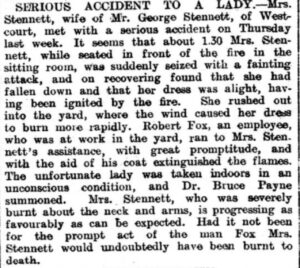
A fire in a barley straw stack in 1910 caused damage to mangel wurzels and a cattle fence at a cost of £65. George was an overseer for the parish for at least 1913-1915, together with Richard Higgs who was farming at Coxhill. There were various newspaper reports of George selling sub-standard crops and then his father-in-law “sold” the farm in 1919, following a lawsuit for libel at which Joseph and his wife were the defendants. The lease was given up and the livestock and implements sold, as the farm belonged to the Ecclesiastical Commissioners still. There was obviously ill feeling between George and his in-laws, and George’s wife and children had gone to live with them in Eastry. George was essentially homeless and jobless. He remained living in Shepherdswell until his death, writing poetry, some of which was published.
Frederick James Grabham, a famer born in Devonshire, became the next tenant, moving in with his wife, 2 sons and a daughter. Both sons assisted with the farm. During the Tithe changes and unrest in 1934, there was a raid by a group of men acting for the Church Commissioners at Beechbrook Farm at Westwell, Ashford. Local farmers had got wind of the raid and had blocked entrances with cars and farm vehicles. Eventually, the group manged to secure a bull, some farm implements and about 70 ducks, loading them into a lorry and driving them to West Court Farm (owned by the Church Commissioners),
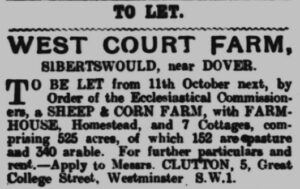
where the ducks were left on the pond. That night, a party of men in lorries, supposedly numbering between 100-150 people, visited West Court and took Frederick prisoner. They had organised their raid at the Halfway House on the Dover Road, wore black masks and had the word ‘socks’ as their password. His son, Don, was at this time living at Cam Hill Farm and heard the commotion, realised that something was going on, and raised the alarm. The locked gate had been taken off its hinges and a cordon thrown around the farm buildings and cottages. The raiders found the bull, a sow, the ducks and implements, however by now, Mrs Grabham was shouting “Murder!” and “Police!” The police soon attended and order was restored, with raiders subsequently arrested and tried.
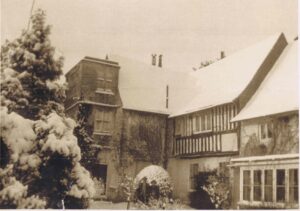
In 1936, the Weir family came down from Southwest Scotland to take up the tenancy. The depression in Scotland was worse than in England and John Weir moved in with his 3 sons, John, William James and Matthew Hillhouse.
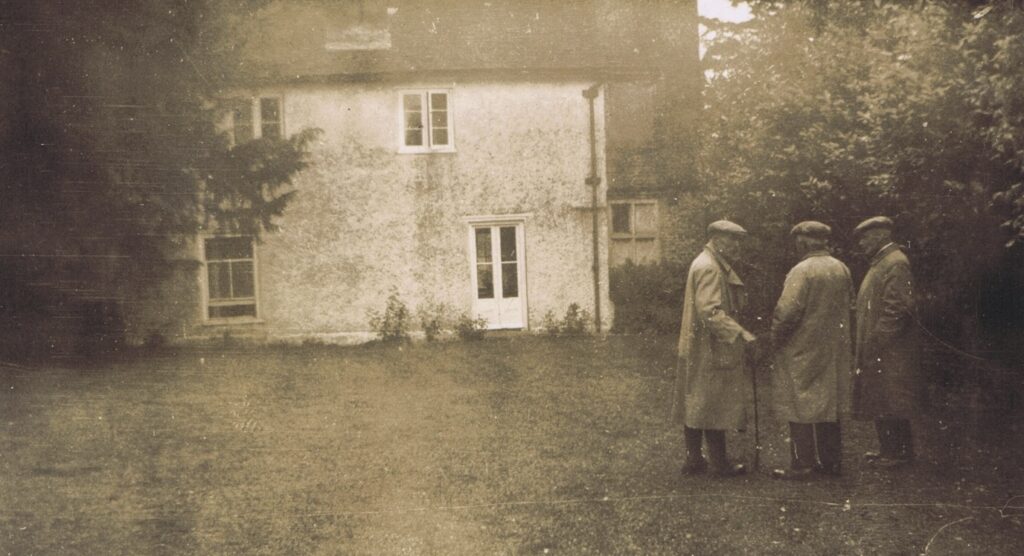
John junior, known as Jack, was his father’s assistant, with William described as a cowman and Matthew, more commonly called by his middle name (pronounced ‘Hillus’) was a shepherd on the 1939 Register. William was also an ARP 1st aid equipment driver during WW2.
The Weirs were dairy farmers and their herd of Ayrshire cows were brought down to Shepherdswell by train, being walked up the lane to the farm when they arrived. They farmed both West Court and Long Lane Farms together, some 688 acres by the year 2000. In the earlier years, farming changed very little, with dairying and finishing of the crossbred beef progeny, sheep and cereals, mostly wheat, barley and oats and usually Spring sown, as well as grass, kale, mangel wurzels and swedes for stock feed. There were also a few pigs and some hens. The main farm buildings were at West Court. Long Lane was purchased and Hillus lived there with his wife, Norah née Jennings. Norah had originally come from Huddersfield to West Court as a Land Army girl during WW2 and on one occasion, saved Hillus from a “raging bull”. She was awarded a British Empire Medal in the 1945 New Year’s Honours List for this heroic act.
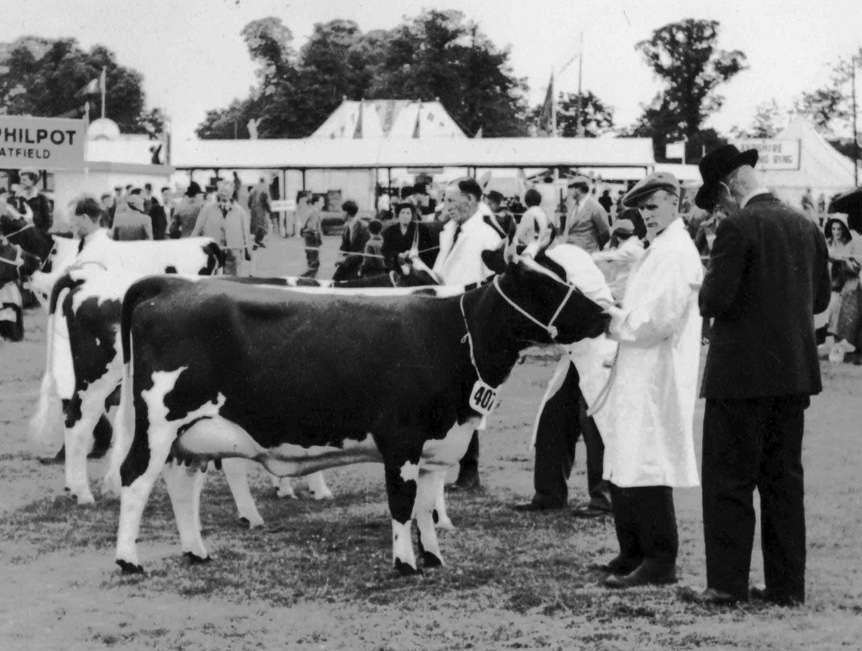
Cows were shown at local shows and Ploughing Matches. The Pedigree herd name was “West Court” and so any calves born on the farm had the West Court prefix in their name. William became senior partner in 1980 when John died. William’s son Jim having joined the family business, subsequently took it over fully when his father died in 1983.
The following information has been passed on by Jim Weir:
For milking, the cows were individually chain-tied in a traditional cowshed. This had vacuum milk pipelines running around its walls and at each of the twice-daily milkings, the 6 milking units were gradually moved around the byre as each cow was milked. This required 2 men for each milking and another to feed the calves and wash off the udders. To update the dairy would have taken a lot of capital and the Commissioners were not prepared to fund this, so the decision was taken in the early 1980s to sell the approximately 70 milkers. At
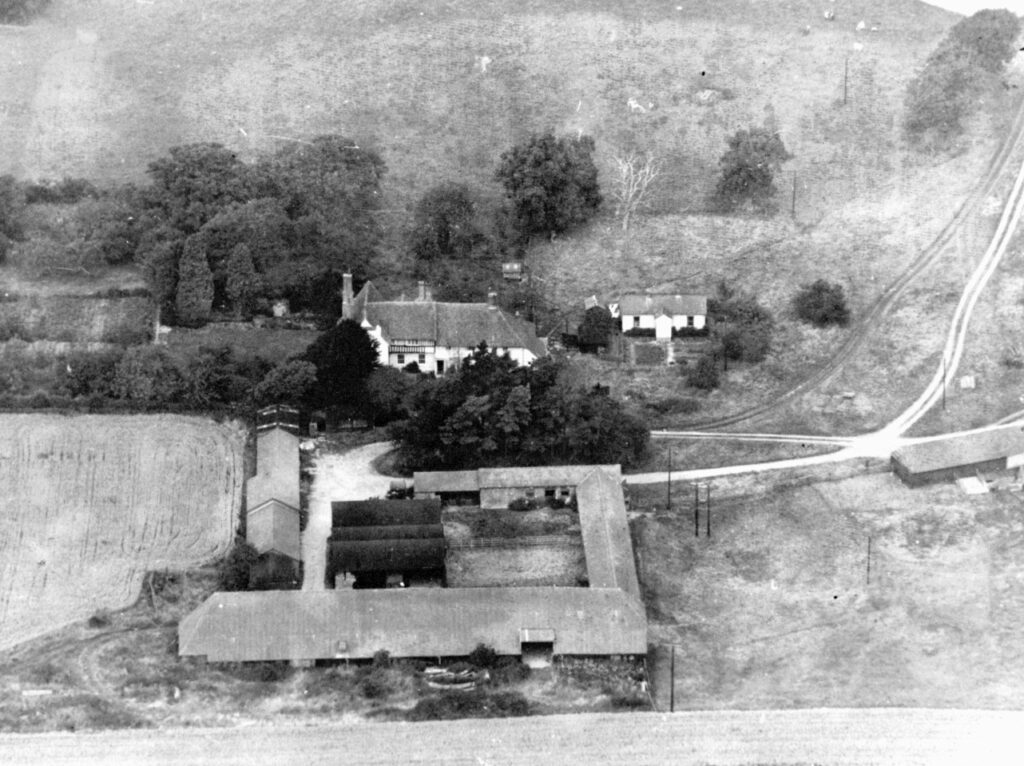
this time, the ministry was offering a ‘golden handshake’ grant to leave the over-supplied milk industry and the Weirs reluctantly sold their herd, with the exception of half a dozen that were retained to multiple-suckle dairy cross beef calves purchased in Ashford market, that would then be sold on. Later yearling store cattle were purchased to graze for a season and finish out of the yards on silage and barley-based concentrate rations. The returns for this were not making a profit and the last bullocks were sold, fortuitously, not long before the BSE crisis hit farmers all over the country.
A shepherd was employed to lamb the 400 or so sheep in the wooden framed sheds at Long Lane. As the shepherd got on in years, he found the job more difficult and lambing was stopped. Instead, ewe lambs were bought in each autumn to sell on for breeding the following year and the shepherd moved to a part time capacity. He retired in the 1990s and Jim looked after the then 120 sheep himself until he decided that he’d seen enough foot rot in 1999! The 25 or so acres of grass were then let out to another sheep farmer to worry about. The shepherd still lives in one of the rented cottages on the farm.
In 2000, Jim had two full-time employees to work on the farm with him and a casual worker for corn carting plus some family help. Jim was also doing contract ploughing, combination power harrow drilling for Peter Mummery’s 250 or so arable acres at Chilli Farm, Coldred, spraying for Peter and some work for another farmer at Lydden.
Crops were stored at West Court for sale between November and June but because of limited space, both the malting barley and oil seed rape were sold at harvest.
The Ecclesiastical Commissioners sold West Court Farm to John Plumptre of Fredville Park in 2013 with Jim continuing as tenant. John Plumptre was a descendant of the tenant some 200 years earlier.
Jim retired from farming in 2020, sold Long Lane Farm and gave up the tenancy of West Court Farm
West Court Farmhouse is now occupied by new Tenant James Ledger who farms the land with his father and 2 full-time employees who both live locally, taking on 3 extra people for harvesting. James is a 3rd generation farmer, working for 25 years in the business. The family farms a total of 4,200 acres, of which they own roughly half, contract-farm a quarter and have a Farm Business Tenancy (FBT) on the final quarter. West Court is part of the FBT. Their main farmyard is at Tilmanstone and their other farms spread out for roughly 10 miles from this centre.
James says “We have not had a brilliant growing year this season, although we had good planting conditions in autumn 2022 we then had a very mild winter, at this time we usually rely on the cold to slow the crops growth down and control pests naturally. After Christmas we had a prolonged dry spell followed
by very wet and cold spring right into May. June was kind to us with long hours of sun but then we had the wettest July I can remember which delayed harvest considerably.”
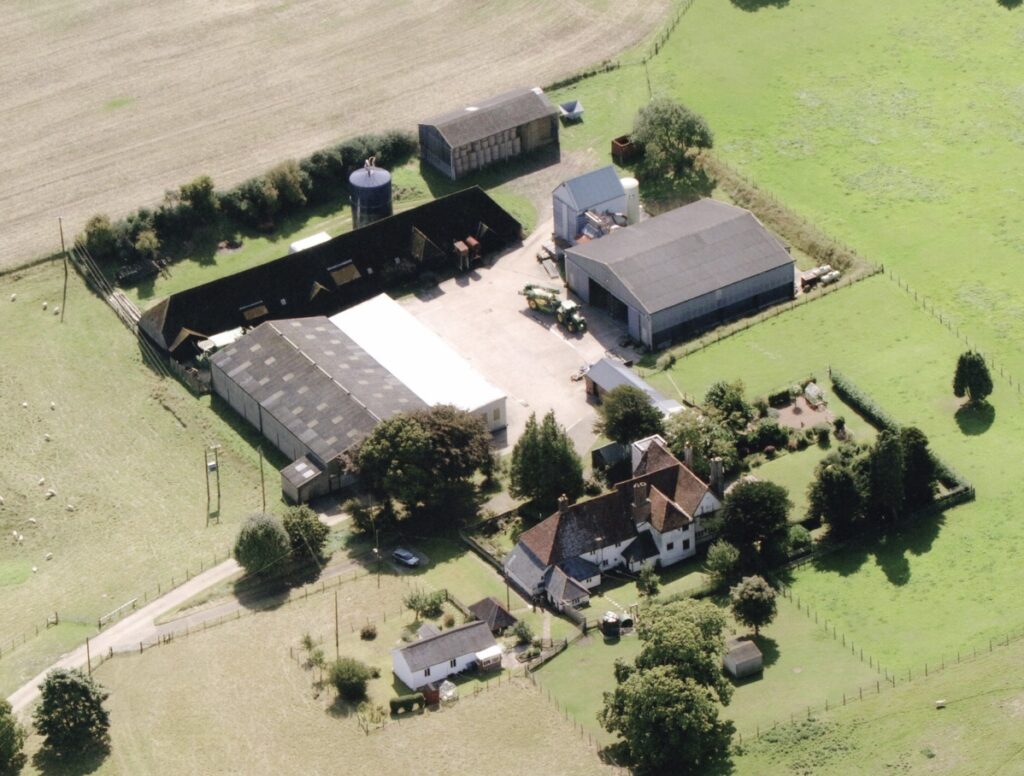
West Court Farm crops 2000 – information from Jim Weir
- 25 acres of permanent pasture for sheep grazing
- 317 acres of winter wheat
- 40 acres of winter malting barley
- 124 acres of winter oil seed rape
- 52 acres of combining peas
- 38 acres of natural regeneration set-aside
West Court Farm crops in the early 2020s – information from James Ledger
The main crop is wheat which always covers 50% of the ground every year, rotated annually. To give the ground a break from wheat, oil seed rape, spring barley, spring Oats, beans or maize are grown.
Typical uses for the produce would be:
- Wheat Group 1 – Bread/Flour
- Wheat Group 3 – Biscuits + Ice cream cones
- OSR – Cooking oil + fuel
- Barley – Beer
- Oats – Breakfast cereal
- Maize – Energy (gas)
